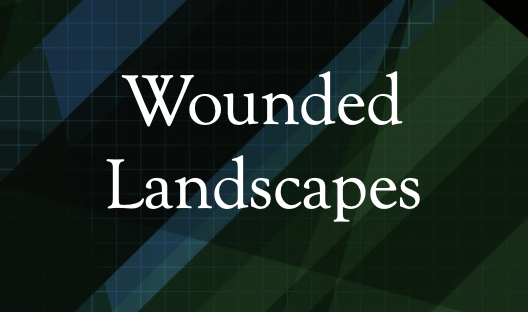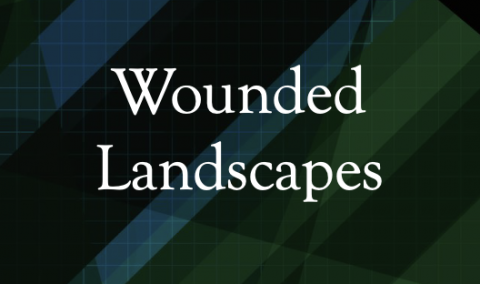CALL FOR PAPERS - COOLABAH Journal
Wounded Landscapes: Human Intervention into Natural Ecosystems.
Cultural approaches and artistic responses

Guest Editor: Herman Bashiron Mendolicchio
Associate Editors: Sean Lowry and Honi Ryan
The impact of human activity on the natural ecosystems of planet Earth has reached unprecedented proportions.
The remnants of the industrial revolutions and the perturbing speed of global capitalism are leaving indelible traces on Earth's territories. Wounded and mangled landscapes emerge daily before our eyes, while so-called progress has inflicted a colonisation process on nature, serving illusory economic growth.
Silence, darkness, the intrinsic mechanisms of nature, the sacredness of organic ecosystems with all their inhabitants, and the conformations of various terrestrial landscapes are all under constant threat of human exploitation. Wounded landscapes scattered around the planet are demonstrating their fragility and revealing the betrayal of one of the Earth's most consequential inhabitants: human beings.
The symbiosis, the alliance, and the complicity of people and land are currently suffering a deep fracture. The ecological impact of human activity has reached an alarming level, and human greed is leading us past the point of no return.
Amazon deforestation; plastic islands in the oceans; mining activities that destroy ancient Aboriginal sites; gigantic cemeteries of second-hand clothes in the Chilean Atacama Desert; toxic garbage mountains that contaminate the land and sea; coasts scarred by massive tourism infrastructure; ghost architecture, and myriad other examples reveal the insane use and abuse of land and its resources.
This edition of Coolabah seeks to explore creative responses to the diverse challenges that the natural ecosystems are suffering due to the invasive and unsustainable cycle of human production and consumption. Cultural approaches and artistic initiatives can reframe the paradigm through which we observe, understand, and relate to the landscape and natural ecosystems.
Proposals that reflect upon one or more of the following topics and questions, among others, will be considered for publication:
- Art and landscape in times of climate emergency and human exploitation
- The colonisation of nature
- The sacredness of natural ecosystems
- Mining and art
- Deforestation and art
- Culture, environment, and fragile sustainability
- Art, rurality, and agricultural challenges
- Toxic interventions in natural and social ecosystems
- Art and the limits of growth
This edition accepts academic articles (up to 6,000 words) or creative work with artist statements.
Deadline for full papers and artistic projects: 1 May 2022 (EXTENDED UNTIL 1 June 2022)
Papers and queries can be sent to Claire Wilson (general co-editor of Coolabah) at clairerosslynwilson@gmail.com
Coolabah Webpage: http://revistes.ub.edu/index.php/coolabah/index
Author guidelines:
https://revistes.ub.edu/index.php/coolabah/about/submissions
About Coolabah
COOLABAH is the official journal of the Observatori: Centre d' Estudis Australians i Transnacionals / The Australian and Transnational Studies Centre at the Universitat de Barcelona. The aim of the journal is to become an international forum for original research in the field of Australian and Transnational Studies and to be totally interdisciplinary in its content.
About the guest editors
Herman Bashiron Mendolicchio is a researcher, writer and curator, working across different disciplines, territories and cultures. He holds a PhD in “Art History, Theory and Criticism” from the University of Barcelona and he is currently teaching in different Universities. He is Lecturer at the Cultural Management Programme of the University of Barcelona, and Coordinator of the Postgraduate Course on International Cultural Cooperation. His current lines of investigation involve the subjects of intercultural processes, participation, collaboration, travelling, globalization, ecology and mobility in contemporary arts and cultural policies. His practice and research explore the topics of art in public space and the broader interactions between contemporary creation and transnational relations. As a writer, consultant, facilitator and independent researcher/curator he collaborates with international networks, organizations and institutions and writes extensively for several international publications.
Sean Lowry is a Melbourne-based artist, writer, curator and musician. He holds a PhD in Visual Art from the University of Sydney and is currently Head of Critical and Theoretical Studies and Associate Director (Research) at Victorian College of the Arts, Faculty of Fine Art and Music, University of Melbourne. Lowry has exhibited and performed extensively both nationally and internationally and his writing appears in numerous journals and edited volumes. He is also Founder and Executive Director of the global blind peer reviewed exhibition program Project Anywhere (www.projectanywhere.net), one half of Cūrā8 (with Kim Donaldson), and one half of The Ghosts of Nothing (with Ilmar Taimre). For more information, please visit www.seanlowry.com
Honi Ryan is an artist and researcher with a nomadic social practice. Born in Melbourne and working between Paris and Berlin, Ryan has exhibited and performed in twelve countries, attended residencies internationally with both collaborative and solo projects, and has published two artist books on her artistic research. She has presented at art and philosophy conferences and taught in universities in Australia, France, Germany, Pakistan, and the US, and is on the editorial committee of the international art organisation Project Anywhere. Ryan holds a Master of Fine Art in Creative Practice from the Transart Institute with Plymouth University, and a Bachelor of Visual Art with first-class honours from Sydney University where she was awarded the University Medal.


